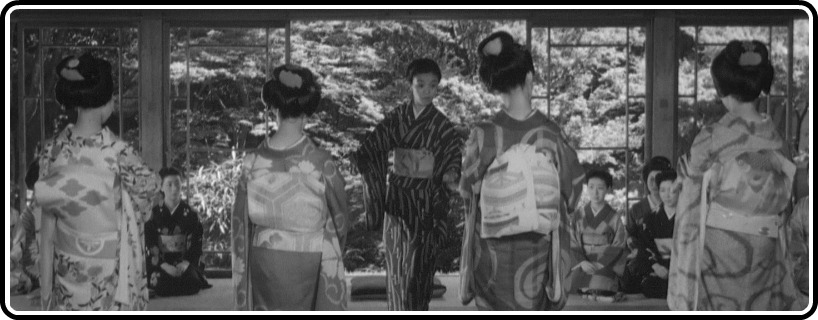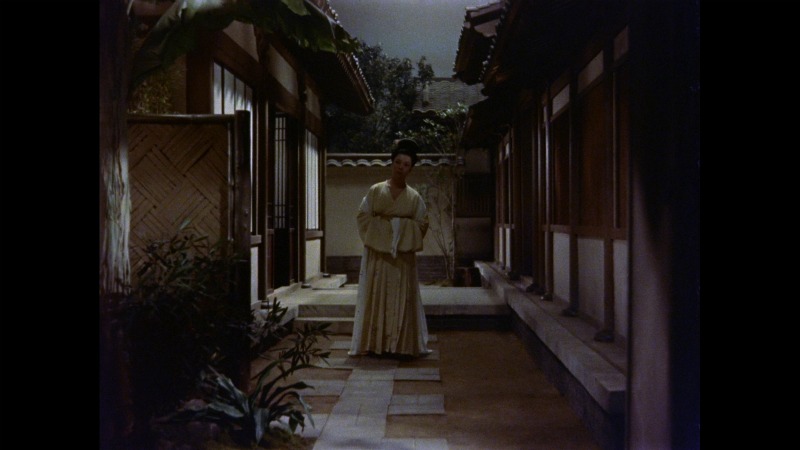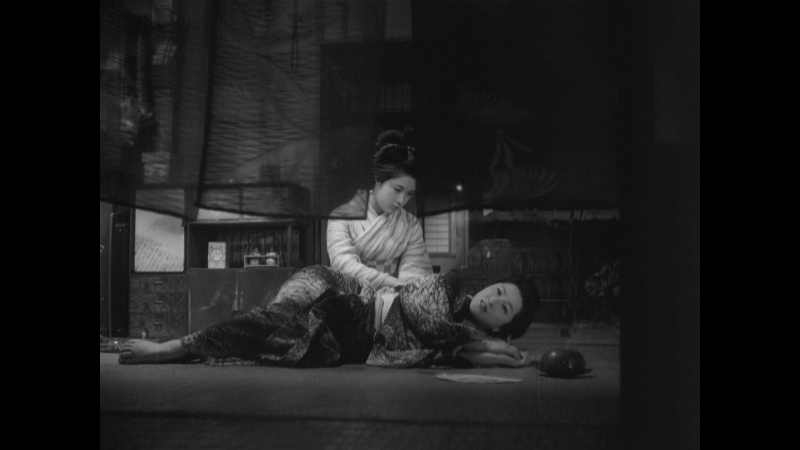
The very first Kenji Mizoguchi film I ever saw was Sansho the Bailiff, back in 2006, having heard that, at one time, Terrence Malick (with whom I was, and continue to be, obsessed) had sought to turn it into a stage play. The mind reels at what a Malick play would even resemble, but moreover, I wanted to see the film that captured the imagination of a filmmaker such as him. I didn’t much get it. I have endless admiration for those who, by the age of twenty, were already wide open to such things, but the simple fact is that it wasn’t until the following fall, when I was nearing twenty-one, that I gained any considerable understanding of or love for many foreign or classic films.
Once the ball started rolling, though, it was impossible to stop, and it’s a damn shame I hadn’t bothered to revisit the film many consider to be Mizoguchi’s masterpiece until this box set finally prompted it. Sanshô Dayû, as the good folks at the Masters of Cinema have more accurately called it (it is the original Japanese title after all, and the meaning of Sansho’s title lies somewhere between “steward” and “bailiff,” a not insignificant dichotomy). As with his Ugetsu, its setting is ancient history, and has some of the quality of a legend about it, with characters defined in broad strokes, though this is not to say they are simple, either. It’s just that their complexities are more clearly delineated.

Tamaki and her children, Zushio and Anju, are journeying to rejoin their exiled patriarch. Along the way, they are kidnapped; the children sold into slavery, their mother into prostitution. The children eventually end up under the rule of Sansho, a ruthless master who only sees the request to give the children a lighter load as a waste of the money he spent to acquire them. They grow up in the camp. Gradually, Zushio, the older of the two, comes to take on more responsibility, seduced by the little bit of power he’s able to acquire. His sister is less fortunate, but less greedy, too. Sanshô has that in common with Ugetsu as well – a tendency to turn the women purely into selfless martyrs, reflections of the doubts and regrets of the men, and reminders of the supposed humanity they’ve since left behind. At least one will have to die to firmly plant them to the path of righteousness. But Mizoguchi so carefully toes the line, ensuring that his characters very pointedly serve the themes he’s exploring while also allowing moments to enrich them, that they never feel purely in the service of a larger structure.
The same cannot be said, unfortunately, of all of Mizoguchi. Yôkihi, the only color film in the set, almost entirely abandons its characters in favor of a far-too-constructed narrative that, in spite of some incredibly lovely moments, never quite coalesces. Set in 8th-century T’ang China (which puts it just slightly before Sanshô‘s Heian setting), it follows the widowed Emperor Hsüan-tsung as he takes up with a concubine that resembles his late wife, only to totally fall in love with her, and the resulting distraction creates the potential for a total downfall. As with Sanshô and Ugetsu, Mizoguchi employs another woman to represent the paragon of innocence, wisdom, and compassion, more purposefully utilized as the reflection of what men hope to be than a person unto herself. Unlike those films, Yôkihi is rather lacking in dramatic urgency, often skipping over huge chunks of time in order to condense the sprawling story into a cool ninety minutes. Still, since you’re getting it with the box set anyway (and, just to reiterate, the box set is well worth the investment), an early scene in which the Emperor and concubine fall for one another amidst a masked fair is far and away the film’s highlight, lovingly lit and exuberantly executed.

I’ve been mentioning some of the more questionable choices Mizoguchi made in representing women in certain films, but even casual fans of the filmmaker will recognize that there must be a purpose in so doing, given his significant reputation for telling stories of strong, complex female characters, though even some of those films were more in the theoretical sense than in the actual, practical sense.
Street of Shame, for example, probably the most acclaimed of all his films about the modern state of prostitution, goes to great lengths to emphasize just how much it encompasses everything horrible about prostitution, and ends up feeling terribly false and ostentatious. It basically follows five women in various predicaments created by their profession and station in life, much the same way a movie like He’s Just Not That Into You attempts to say it all about relationships by literally depicting someone in every possible stage. It becomes a little scattershot dramatically, resulting in a few good-to-great scenes, but more than a handful of characters nearly-literally crying, “damn this horrible system!” It’s an honest emotion, but it still makes for awkward drama.

Conversely, a film like Uwassa no onna, covered in the first part of this review, or Gion bayashi manage to say so much more about the wretched nature of the business simply by depicting everyday conflicts within in, conflicts not born exclusively by the system, but often exacerbated as a result. In the latter film, an experienced geisha agrees to help train a sixteen-year-old girl in the profession, despite the fact that her father is too poor to provide his daughter the necessary clothing and financial support along the way. Here, Mizoguchi so beautifully realizes how bad things have to get for women to turn to prostitution, the horror that comes in being forced to beg for one’s last resort, and the state of, essentially, indentured servitude that results from finally attaining it. He lets it all gradually, seamless reveal itself rather than hammering away.
The films generally fare quite well on Blu-ray, with only Yôkihi really suffering (faded color, tons of damage to the print, and so on), but even that has moments that are absolutely ravishing. Sanshô also looks a little worse for wear, but in a way that feels more in keeping with its rugged aesthetics (and once gorgeously shot and very earthy), but it joins the others in appearing quite robust, warmly representing the black-and-white lighting and providing a great deal of clarity and depth. As with the last batch, none are the best transfers MoC put out last year, but they’re extremely well-done and fantastically represent the films. And that’s more than enough.

Once again, Tony Rayns comes onboard for video discussions of each film, as well as a commentary track on Street of Shame. His insights are tremendously valuable, and while the video interview format can sometimes be a little trying, he manages to find that perfect balance between plenty of prepared remarks and (at least seemingly) off-the-cuff observations. He keeps a casually bemused tone that never discounts the emotionality of Mizoguchi’s work, or the way his life informed it, while also slyly noting many of the ironies inherent to studying the man (that he was himself a regular customer at brothels, that he didn’t have the highest esteem for women in his profession, and so on). Fascinating all around, and bolstered only by the truly mammoth (seriously, I’ve read many, much shorter novels) book that accompanies this release, featuring several essays on each film.
As I noted previously, I cannot recommend this release highly enough. Despite being a limited edition and there being an early run on them, they are still selling the box set on their own website, as well as other outlets. But do pick it up while it’s still around; it’ll appreciate not only monetarily, but also emotionally.



![Bergman Island (The Criterion Collection) [Blu-ray]](https://criterioncast.com/wp-content/uploads/2022/11/bergman-island-the-criterion-collection-blu-ray-400x496.jpg)
![This Is Not a Burial, It’s a Resurrection (The Criterion Collection) [Blu-ray]](https://criterioncast.com/wp-content/uploads/2022/11/this-is-not-a-burial-its-a-resurrection-the-criterion-collection-blu-ray-400x496.jpg)
![Lars von Trier's Europe Trilogy (The Criterion Collection) [The Element of Crime/Epidemic/Europa] [Blu-ray]](https://criterioncast.com/wp-content/uploads/2022/11/lars-von-triers-europe-trilogy-the-criterion-collection-the-element-of-400x496.jpg)
![Imitation of Life (The Criterion Collection) [Blu-ray]](https://criterioncast.com/wp-content/uploads/2022/11/imitation-of-life-the-criterion-collection-blu-ray-400x496.jpg)
![The Adventures of Baron Munchausen (The Criterion Collection) [4K UHD]](https://criterioncast.com/wp-content/uploads/2022/11/the-adventures-of-baron-munchausen-the-criterion-collection-4k-uhd-400x496.jpg)
![Cooley High [Criterion Collection] [Blu-ray] [1975]](https://criterioncast.com/wp-content/uploads/2022/11/cooley-high-criterion-collection-blu-ray-1975-400x496.jpg)